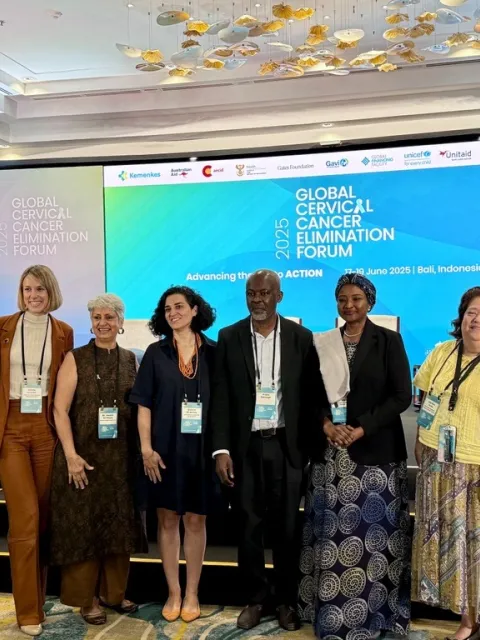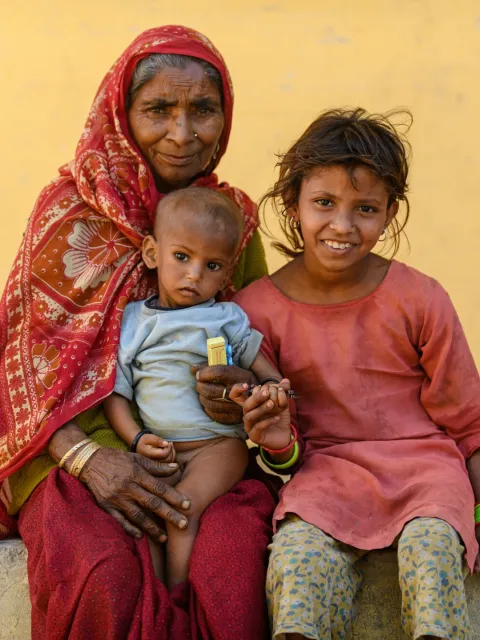Expanding HPV testing is essential for cervical cancer elimination goals

Tracey Shissler at Jhpiego reflects on the initial challenges and accomplishments of the SUCCESS project to improve screening of cervical cancer in low-resource settings.
As I write this and recognise World HPV Day (4 March) and International Women’s Day (8 March), I think of where we are compared to where we want to be to eliminate cervical cancer, one of the top cancer killers globally for women, or at least get close to reaching the World Health Organisation's 90:70:90 goals by 2030.[1]
Where we are now is that we know HPV causes cervical cancer. And we know cervical cancer is preventable if detected early in precancerous stages. But we still aren’t doing enough to make prevention easier now for both women and health providers.
Based on current HPV vaccination rates globally – we are not anywhere close to seeing 90% of girls vaccinated by the age of 15 by 2030 – screening adult women for HPV at the age of greatest risk for developing precancerous lesions (30-49) is not the short game we hoped. Screening women will remain critically necessary for today’s generation of women and into the next, until we have a sufficient proportion of girls (and, ideally boys too!) vaccinated against HPV before they are sexually active and unknowingly passing and contracting HPV.
SUCCESS, Scaling-up Cervical Cancer Elimination with Secondary prevention Strategy, is one of a limited number of global health projects that seeks to make cervical cancer prevention more accessible to women and easier to providers to manage in lower-resource settings. Countries that fall into low- and middle-income categories are still those that carry the burden of cervical cancer deaths as a result of lack of financing and policy for updated cervical cancer prevention options, among other reasons.
SUCCESS focuses on four countries (Burkina Faso, Côte d’Ivoire, Guatemala and the Philippines) that are well-positioned to transition from the former gold standard for cervical cancer screening in health care settings with limited resources – visual inspection with acetic acid (VIA) – to using WHO-endorsed HPV testing as the new screening approach. We began partnering with Ministries of Health in early 2020 in support of these countries’ larger plans for introducing HPV screening and sharing their efforts with countries in their regions.
We now know that the best possibility of success with introducing and expanding HPV testing in any country is supporting an enabling environment for advocates and health providers to empower women to self-collect and do so where it’s most convenient – the health facility, home, etc – while also integrating testing within women’s routine health services. The decision to self-collect is a game-changer for women. Self-collection reduces unnecessary time in health clinics and means a health provider is spending their time on women who actually have HPV and are the most at risk for developing cervical cancer.
To introduce and expand HPV testing within a short project period, our project plans accounted for the typical public health implementation challenges and roadblocks one thinks of when introducing updated reproductive health care: slow policy change, supply chain issues, importation hurdles, etc. But just like most global health projects, we didn’t happen to plan for a global pandemic that would stop us almost as soon as our project started in early 2020.
In West Africa where countries were arguably less impacted over time by COVID-19 (as compared to the Americas and Europe), SUCCESS project teams set up slowly in 2020 and early 2021, as stakeholders were increasingly available, and began screening with HPV testing in June 2021, while also incorporating HPV screening into national health plans, purchasing and supply chain systems.
Guatemala and the Philippines have had a longer start-up time due to pandemic surges. HPV testing began rolling out in late 2021, after earlier hybrid training and detailed implementation and transition plans kicked off with cervical cancer government counterparts.
Ministries of Health in all four SUCCESS project countries continue to offer HPV testing. They have recently added thermal ablation as a precancerous lesion treatment option that requires fewer resources and is easier for medical staff to use than cryotherapy (“cryo” requires a cumbersome nitrous oxide tank and all the connections in between), while working on larger policies, guidelines and plans for scale-up.
What has been better than expected is women’s preference for self-collecting HPV samples for testing. The potential this has for accessible prevention is obvious but an unexpected benefit came to light with the need for social distancing. Self-collection can reduce women’s time in a facility as well as time with medical staff, reducing the possibility of COVID-19 exposure for everyone involved. It has also given countries the option to easily offer cervical cancer screening outside of facilities altogether.
The global community needs to continue the expansion of HPV screening to achieve the elimination goals in our lifetime. It’s wonderful to hear colleagues’ enthusiasm in the project countries as screening numbers grow despite the pandemic, and to see health workers embrace the introduction of screening into routine reproductive health care. We know their commitment to improving women’s access to HPV testing is what has driven SUCCESS through the pandemic and, together with vaccination and early treatment, will be what ultimately moves us all closer to where we want to be as a global community to control and eliminate cervical cancer.
_______________________________________________________
[1] WHO's 90:70:90 goals for 2030:
- Vaccination: 90% of girls fully vaccinated with the HPV vaccine by the age of 15;
- Screening: 70% of women screened using a high-performance test by the age of 35, and again by the age of 45;
- Treatment: 90% of women with pre-cancer treated and 90% of women with invasive cancer managed.
Last update
Friday 11 March 2022Share this page


